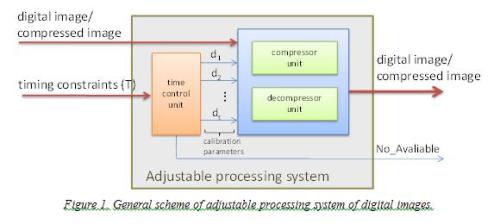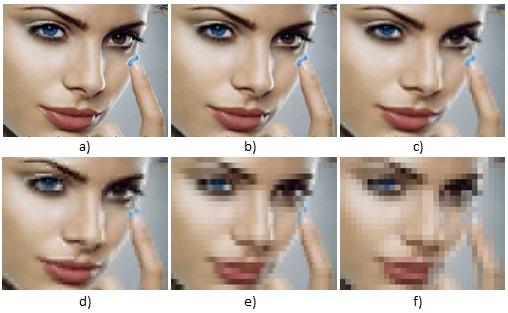Can we help you?
Contact us

Can we help you?
Contact us

Thank you for contacting us
Your form has been submitted successfully Our team will contact you again as soon as possible.
Whooppss...!! An error has occurred
Try sending later or write an email directly to areaempresas@ua.es

 PATENTED TECHNOLOGY
PATENTED TECHNOLOGY
INFO
SHEET
DOWNLOAD
EXECUTIVE
ABSTRACT
CONTACT DETAILS: Research Results Transfer Office-OTRI
University of Alicante
Tel.: +34 96 590 99 59
Email: areaempresas@ua.es
http://innoua.ua.es
The research group “Specialized Processors Architecture Laboratory (SPA-Lab)” of the University of Alicante has developed a digital image system that dynamically adjusts its compression/decompression time processing regardless of image characteristics. This adjustable feature allows the system to maintain quality of service (QoS) at any application, especially those with limited resources.
The research group offers to industry the know-how for the adaptation and implementation of the compression system, the technology license which is protected by patent or a combination of some of these services.

Image compression methods play an important role in many applications with limited resources for viewing, storage and processing. A framework in which these limitations are obvious is the development of applications for the internet and mobile devices such as phones or PDAs. In this context, developing interfaces aimed at the end user is strongly conditioned by the time it takes to download and view multimedia data.
So, it is appropriate for several applications to have control over the data processing time to adapt available resources and to maintain a suitable quality of service. For those applications it is a priority to meet timing constraints either for viewing by the user or as input to another application.
Classic image compression algorithms reduce the image size using compression rate, without taking into account the processing time and the specific requirements of the application. The presented system provides a novel aspect because it allows setting the completion time of compression/decompression of images, thus overcoming disadvantages concerning non predictability of processing. This system works this way regardless of the compression rate, size, number of colours and image resolution.
The proposed system consists of functional modules required to run the processing of compression/decompression that is described below.
The operation scheme of the system is as follows: the system receives a digital image compressed or uncompressed and the maximum delay for processing it. Based on that information, the system is calibrated internally to run the action by compressing/decompressing the image within the stipulated time.
The process of compression/decompression of digital images has become fragmented into independent subtasks with configurability through a set of parameters that calibrate its processing time. Thus, the proposed adjustable processing system determines, according to the time available, tasks not mandatory and optional that will only run when the timing constraints allow them. So, although the full processing exceeds the available time, it will be possible to obtain results on time.
Flexible image processing system has two inputs and two outputs. The scheme of the system of described in Figure 1.

The time-bound T is expressed in time units (seconds, milliseconds, etc.) and set the processing time delay to obtain the results.
The binary output No_Avaliable shows if it is possible to compress or decompress the image in time (T).
The proposed system consists of the following components or units:
• Adjustable image processor that is responsible for processing input images to compress or decompress them by means of the compressor and decompressor units.
• The time control unit determines the real-time behavior of the processing and makes the system finish in time
Time control unit construction maintains determinism in the response times of the system.
When the system receives a digital image or a compressed image and a maximum processing time , time control unit analyses this timing constraint and configures image processor units using a collection of calibration parameters (d1,..., dn) which influences the processing time and the quality of the results (see Figure 2). These parameters adjust the compression time depending on the restrictions imposed by the application, and determine the characteristics of compressed image compression carried out: processing time and image quality.
Where the timing constraint restriction cannot be met, that is, even with the corresponding value to a minimum delay of the parameters the restriction is reached, the line No_Avaliable is activated. When this occurs, the application must decide what action to take: either it rejects the compression or it gets the image to be taken in the shortest time available.
Figure 2. Different quality examples
This system can be programmed in software to build an IT infrastructure, it can be implemented in a reconfigurable card to be incorporated directly into computers, either, the system can be manufactured into ASIC integrated circuit to be incorporated into other signal acquisition devices like digital cameras or display devices such as monitors or displays.
MAIN ADVANTAGES OF THE TECHNOLOGY
The developed system has the following advantages:
• The adjustment capability of the system allows maintaining the quality of service (QoS) in images/video sequences in highly demanding environments (e.g.: high frame rate).
• The system is real-time predictable and, therefore, it allows compatibility and integration in other more complex systems.
• The system can be implemented via software, can be built in a reconfigurable card or, can be manufactured into an integrated circuit.
INNOVATIVE ASPECTS
• The system allows dynamically adjusting the compression/decompression time delay to the needs of each environment.
• The system meets timing constraints regardless of the characteristics of the image, the rate of compression, size, number of colours and resolution, as well as operating environment.
• The system overcomes issues with the predictability of operations of compression/decompression of digital images.
The Research Group has developed a prototype of the system implemented into a FPGA reconfigurable card. The system can be tested and simulated. Also there is a detailed documentation of the specification.
The system can be implemented via software (running on any platform), in a card reconfigurable (installation on computers), or, the system can be manufactured in an integrated circuit for inclusion in mobile devices, digital cameras or other devices for image processing.
Specific customer's requirements could be considered to determine the best way of implementing the system.
Industrial sectors of interest:
This patent is the result of the work developed in the specialized processor architectures laboratory research group (SPA-lab, http://www.dtic.ua.es/spa-lab/).
The Specialized Processors Architecture Laboratory (SPA-Lab group) is aimed to adapt the architectural aspects of the processor to the computer specifications of the systems.
The research topics include basic and applied investigation that especially consider computer problems of the nearer geographic context. These cover the development of architectures specialized for computer assistant manufacture, the develop of adjustable in time and precision arithmetic units and the creation automatic systems for security processes.
The members of the research group have Ph. Degree and have experience managing both public and private research projects. They are autor of numerous research contributions publised in conferences and scientific journals.
Engineering, Robotics and Automation
Carretera San Vicente del Raspeig s/n - 03690 San Vicente del Raspeig - Alicante
Tel.: (+34) 965 90 9959




